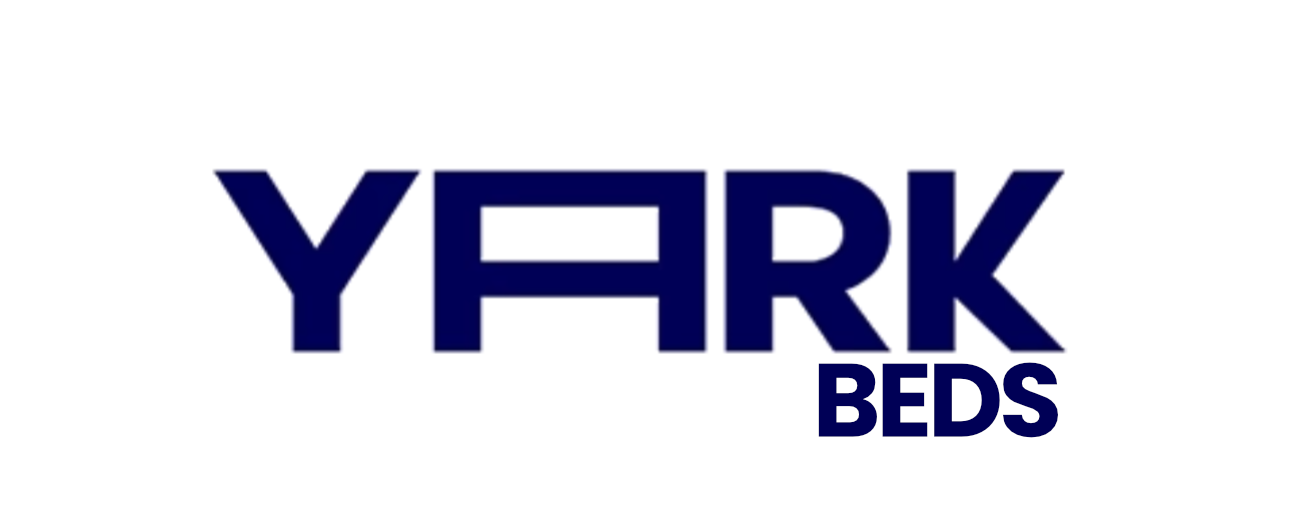S21 (Sheffield)
Sheffield (S21) Postcode Area
Sheffield, in South Yorkshire, is a city renowned for its eclectic neighbourhoods and rich industrial history. Known as the “Steel City,” it offers a unique blend of modern living and natural beauty, with the stunning Peak District nearby. Residents enjoy excellent transport links, including trams and buses, making commuting easy. The city boasts a variety of amenities, from bustling markets and trendy cafes to cultural attractions like the Millennium Gallery. With a friendly community spirit, Sheffield is a fantastic place to call home.
Overview
Sheffield (S21) postcode district is located in the ceremonial county of South Yorkshire, and is part of the Sheffield postal town.
The S21 postcode in Sheffield, South Yorkshire, is a vibrant suburban area with a population of 15,330. It boasts a diverse community, a variety of housing options, and excellent transport links, making it an attractive choice for families and commuters alike. The average house price is £163,500, significantly lower than the UK average of £288,000, while the area enjoys a relatively high average number of cars per household at 2.39.
Settlements within S21 include:
Birleyhay, Bramley, Chesterfield Canal, Eckington, Emmett Carr, Greenside, High Moor, High Moor, Killamarsh, Marsh Lane, Middle Handley, Mosborough, Nether Handley, Norwood, Oxclose, Plumbley, Rother, Spinkhill, Troway, Upperthorpe, Wales, Westthorpe
People and Demographics
Demographics
The S21 postcode is home to a predominantly white population, with 97.4% identifying as White. The area's population density stands at 5283.0 people per sq km, which is much higher than the England and Wales average of 394.6. The average age of residents is 43.1, slightly older than the UK average of 40.7 years.
Unemployment
Percentage of people in Sheffield S21 who are classed as being unemployed at Census 2021.
An unemployment rate of 5% in Sheffield S21 is slightly above the UK average of 4.3%, indicating a moderate level of joblessness.
While some residents may face employment challenges, the rate still suggests a functioning local economy. Efforts to boost job opportunities could further enhance community stability and support the area's long-term growth.
Diversity
Percentage of residents in the S21 postcode region who identify as white.
With 98% of Sheffield S21 residents identifying as White, this postcode has a predominantly homogenous population with limited ethnic diversity.
While the community shares common traditions and cultural practices, efforts to promote inclusivity and cultural awareness can further enhance neighbourhood cohesion and enrich residents' experiences.
Population Growth
Population growth means that the population of Sheffield S21 is increasing by 2% each year.
Across the UK, (England, Scotland, Northern Ireland and Wales), the average population grown from 2023-2024 is 0.66%.
Children
Are under 18 years old
18% of Sheffield S21 are under the age of 18 at the time of the Census 2021.
Sheffield S21 aligns closely with the UK average of 17.4%. This indicates a balanced mix of families and other household types, with amenities catering to both children and adults.
Retired
Are enjoying retirement
17% of Sheffield S21 are retired at the time of the Census 2021.
Sheffield S21 aligns closely with the UK average of 16%, a mixed community of working-age individuals and retirees. Local amenities are likely to be diverse, and cater to both younger and older residents.
Census 2021 Demographics
Who lives and works in S21?
Analysing the S21 population's characteristics, including age distribution and cultural diversity, provides valuable insights into the composition of the community.
Population
Analysing the S21 population's characteristics, including age distribution and cultural diversity provides valuable insights into the composition of a local community.
Demographics
The S21 postcode is home to a predominantly white population, with 97.4% identifying as White. The area's population density stands at 5283.0 people per sq km, which is much higher than the England and Wales average of 394.6. The average age of residents is 43.1, slightly older than the UK average of 40.7 years.
Population Growth
Population growth means that the population of Sheffield S21 is increasing by 2% each year.
Across the UK, (England, Scotland, Northern Ireland and Wales), the average population grown from 2023-2024 is 0.66%.
Children
of Sheffield S21 are under the age of 18 at the time of the Census 2021.
Retired
of Sheffield S21 are retired at the time of the Census 2021.
Gender Ratio
51% female
Gender ratio in census data means the number of males for every 100 females in a population, helping us understand the balance between men and women in a specific area.
Age Distribution
are adults
Age distribution refers to how different age groups are spread within a population, showing the number of people in each age range. This helps understand the population's structure and potential needs.
Age Distribution
"Age Distribution by 5-year bands" in the Census 2021 breaks down the population into groups based on age ranges, each spanning five years (e.g., 0-4, 5-9, 10-14, etc.). This helps to see how many people fall into each age group, providing a clear picture of the age structure in an area.
Living Arrangements
"Living Arrangements" in the Census 2021 refers to people's relationship status and how they live with others. It includes whether someone is married, in a civil partnership, cohabiting as a couple, separated, divorced, or single, and whether they live with a partner, alone, or with others.
Legal Partnership
Legal partnership status of residents in the Sheffield (S21) district, offering insights into the diversity of relationship statuses in the area. This dataset classifies residents aged 16+ in England & Wales by their partnership status.
Gender Identity
"Gender Identity" in the Census 2021 refers to how people personally identify their gender, which may or may not align with the sex they were assigned at birth. It includes options like male, female, non-binary, or other identities, reflecting how individuals see themselves.
Postcodes
Dig even deeper into the S21 postcode:
Click on an postal code below for more information about the area. Each postcode give you a comprehensive overview of the postcode neighbourhood, including address, demographics, crime, transport, amenities and house prices in Sheffield (S21).
Word Cloud for S21
We've trawled social media and the web to discover words that describe the postcode district of S21:
Nearby Towns & Cities
S21 Postcode area
The following towns and villages can be found close to Sheffield S21:
Catcliffe
Population 2,108
3.7 miles
Located in South Yorkshire, Catcliffe offers a quiet and peaceful suburban lifestyle with easy access to nearby amenities and beautiful green spaces for those looking to escape the hustle and bustle of city life.
Nearest Postcode Areas:
Treeton
Population 3,189
4.3 miles
Treeton, located in South Yorkshire, is a quaint village with a strong sense of community, surrounded by picturesque countryside and offering a peaceful escape from the hustle and bustle of city life.
Nearest Postcode Areas:
Sheffield
Population 518,090
4.6 miles
An important centre for metalwork and art, Sheffield lies next to the Peak District National Park, characterised by moorland and rocky ridges.
Nearest Postcode Areas:
Worrall
Population 1,245
4.8 miles
Worrall, located in South Yorkshire, is a thriving village known for its strong community spirit, stunning countryside views, and convenient access to both the bustling city of Sheffield and the peaceful Peak District National Park.
Nearest Postcode Areas:
Swallownest
Population 15,022
5.1 miles
Located in South Yorkshire, Swallownest is a quaint town with a strong sense of community, boasting a range of amenities including charming local shops, picturesque parks, and excellent schools, making it an ideal choice for those seeking a peaceful and family-friendly place to call home.
Nearest Postcode Areas:
Oughtibridge
Population 3,584
5.2 miles
Located in South Yorkshire, Oughtibridge offers a picturesque setting with stunning countryside views, a close-knit community feel, and a range of local amenities, making it an ideal place for those seeking a peaceful and friendly place to call home.
Nearest Postcode Areas:
Rotherham
Population 109,691
5.3 miles
Dating back to Norman periods, Rotherham has been an important centre for iron. However, it was coal that brought the prosperity of the Industrial Revolution to the area. Beyond the town centre, the district is largely rural, with tourism and farming dominating the economy.
Nearest Postcode Areas:
Local Authorities
S21 Postal Town
The S21 postcode includes the following local authorities:
- Bolsover
- North East Derbyshire
- Sheffield
Crime in S21
How safe is this postcode sector?
Did you know which areas in the S1 postcode are considered key hotspots for crime?
Key Hotspots
The S1 postcode area in Sheffield has several key hotspots for crime, including West Street, Division Street, and the city centre. These areas often experience higher levels of crime due to the concentration of bars, clubs, and shops, attracting large crowds of people, especially on weekends.
Historical Crime Issues
Historically, the S1 postcode area has faced challenges with anti-social behaviour, theft, and violent crimes. The city centre, in particular, has been a hotspot for pickpocketing and shoplifting, with criminals taking advantage of the busy environment to commit these offences.
Current Policing Priorities
The South Yorkshire Police force, responsible for policing the S1 postcode area, has set priorities to address these crime issues. Their current focus is on increasing patrols in key hotspots, working closely with local businesses to prevent theft, and engaging with the community to tackle anti-social behaviour.
Recent crime statistics in the S1 postcode area show a decrease in overall crime rates, thanks to the efforts of the police force and community partnerships. However, there is still work to be done to address specific crime hotspots and ensure the safety of residents and visitors in the area.
By being aware of these key hotspots and historical crime issues, residents and visitors can take precautions to protect themselves and their belongings while in the S1 postcode area.
Sources:
1. South Yorkshire Police - https://www.southyorks.police.uk/
2. Crime statistics for Sheffield - https://www.police.uk/south-yorkshire/
Did you know which areas in the S1 postcode are considered key hotspots for crime?
Key Hotspots
The S1 postcode area in Sheffield has several key hotspots for crime, including West Street, Division Street, and the city centre. These areas often experience higher levels of crime due to the concentration of bars, clubs, and shops, attracting large crowds of people, especially on weekends.
Historical Crime Issues
Historically, the S1 postcode area has faced challenges with anti-social behaviour, theft, and violent crimes. The city centre, in particular, has been a hotspot for pickpocketing and shoplifting, with criminals taking advantage of the busy environment to commit these offences.
Current Policing Priorities
The South Yorkshire Police force, responsible for policing the S1 postcode area, has set priorities to address these crime issues. Their current focus is on increasing patrols in key hotspots, working closely with local businesses to prevent theft, and engaging with the community to tackle anti-social behaviour.
Recent crime statistics in the S1 postcode area show a decrease in overall crime rates, thanks to the efforts of the police force and community partnerships. However, there is still work to be done to address specific crime hotspots and ensure the safety of residents and visitors in the area.
By being aware of these key hotspots and historical crime issues, residents and visitors can take precautions to protect themselves and their belongings while in the S1 postcode area.
Sources: 1. South Yorkshire Police - https://www.southyorks.police.uk/ 2. Crime statistics for Sheffield - https://www.police.uk/south-yorkshire/
Education
Highest Rated Schools in S21
As rated by Ofsted
- St Giles CofE Primary School
Sheepcote Road, Sheffield, S21 1DU
Good - Killamarsh Infant School
Sheffield Road, Sheffield, S21 2DX
Good - Immaculate Conception Catholic Primary
College Road, Sheffield, S21 3YB
Good - Camms CofE (Aided) Primary School
Camms Close, Chesterfield, S21 4AU
Good - Marsh Lane Primary School
School Lane, Sheffield, S21 5RS
Good - Killamarsh Junior School
38 Sheffield Road, Sheffield, S21 2EA
Requires improvement - Renishaw Primary School
Hague Lane, Sheffield, S21 3UR
Requires improvement - Birk Hill Infant & Nursery School
Chestnut Avenue, Eckington, S21 4BE
Requires improvement - Eckington Junior School
School Street, Sheffield, S21 4FL
Requires improvement - Eckington School
Dronfield Road, Sheffield, S21 4GN
Special Measures

Unlock the full power of postcode insights.
Data is meaningless without context. Reveal the stories behind a neighbourhood, and make smarter decisions with data you can trust. Gain unlimited access to detailed statistics, exclusive reports, and essential tools.
PostcodeArea is grateful to our sponsors for their support.






